- News
- Reviews
- Bikes
- Accessories
- Accessories - misc
- Computer mounts
- Bags
- Bar ends
- Bike bags & cases
- Bottle cages
- Bottles
- Cameras
- Car racks
- Child seats
- Computers
- Glasses
- GPS units
- Helmets
- Lights - front
- Lights - rear
- Lights - sets
- Locks
- Mirrors
- Mudguards
- Racks
- Pumps & CO2 inflators
- Puncture kits
- Reflectives
- Smart watches
- Stands and racks
- Trailers
- Clothing
- Components
- Bar tape & grips
- Bottom brackets
- Brake & gear cables
- Brake & STI levers
- Brake pads & spares
- Brakes
- Cassettes & freewheels
- Chains
- Chainsets & chainrings
- Derailleurs - front
- Derailleurs - rear
- Forks
- Gear levers & shifters
- Groupsets
- Handlebars & extensions
- Headsets
- Hubs
- Inner tubes
- Pedals
- Quick releases & skewers
- Saddles
- Seatposts
- Stems
- Wheels
- Tyres
- Health, fitness and nutrition
- Tools and workshop
- Miscellaneous
- Cross country mountain bikes
- Tubeless valves
- Buyers Guides
- Features
- Forum
- Recommends
- Podcast
review
£499.99
VERDICT:
Simple and fun cyclo-crossy bike that can mix rough commuting with off-road exploring – but that gear would need sorting
Weight:
9,790g
Contact:
At road.cc every product is thoroughly tested for as long as it takes to get a proper insight into how well it works. Our reviewers are experienced cyclists that we trust to be objective. While we strive to ensure that opinions expressed are backed up by facts, reviews are by their nature an informed opinion, not a definitive verdict. We don't intentionally try to break anything (except locks) but we do try to look for weak points in any design. The overall score is not just an average of the other scores: it reflects both a product's function and value – with value determined by how a product compares with items of similar spec, quality, and price.
What the road.cc scores meanGood scores are more common than bad, because fortunately good products are more common than bad.
- Exceptional
- Excellent
- Very Good
- Good
- Quite good
- Average
- Not so good
- Poor
- Bad
- Appalling
The Charge Plug 1 is a good looking commute, cyclo-cross, gravel, bit of everything bike with a simple alloy frame and fork, even more basic singlespeed drivetrain, and unremarkable parts and wheels. Room for large tyres gives it the potential to take on most terrains and travel further afield – that which the tall gearing will allow.
There are five models in Charge's Plug line, a range of bikes with what the brand from Somerset calls 'all-road' geometry, meaning room for on-trend large volume tyres and rack and mudguard mounts, making them ready for either commuting or epic adventures, or both, and everything in between. The Plug is available as the cheap as chips steel singlespeed Plug 0 (£350) all the way up to the £2.5K titanium 1x11 Plug 5 road bike, so there should be just the right bike in there to, um, sink your budget into.
> Find your nearest dealer here
The Plug 1 sits one up from the bottom of the fleet, a simple singlespeed cyclo-cross commuter hacking about sort of a thing. As a package it looks pretty tidy – Charge has always had a good eye for the aesthetic on a bicycle – and its coordinated looks suggest a far posher bicycle than it is with the stem, saddle graphics and underside, and even the bar-end plugs, matching the frame. If this Satin Rhodamine colour is a bit too brash for you then the Plug 1 also comes in a somewhat stealthier matt black which might be more sensible if you want to hide it among the bike racks. If, however, you like people smiling at you at the traffic lights and shouting 'nice bike' as you pedal past then get this pinky one. I bloody love it.
With its 6061 series aluminium frame, straight blade alloy fork and no geary gubbins, you might expect the Plug 1 to be a little bit lighter than it actually is. It isn't heavy per se, but there's no fancy lightening trickery going on with those tubes; the only concession to snazzy is an integrated headset, and the bike is adorned with standard parts designed to do their job at a price, rather than be exotic or svelte. But for what you're getting for a monkey, they're absolutely fine.
The frame comes with mudguard mounts front and back and rack mounts at the rear as well, with bolts either side of that bulging wishbone seatstay. There are twin bottle mounts should you wish to venture far from taps and pubs. The Plug has plenty of room in the frame and fork for the supplied 38mm Kenda tyres, though you could fit fatter in there without mudguards if you wanted. Knobbly 'cross rubber road.cc favourites Surly Knard 41s fit in both ends happily if you wanted to go chunky and off-road, as well as any of the new wave of voluminous gravelly tyres.
Wheels are, as is common with hoops that come on bikes of this price, the somewhat unglamourous side of perfunctory. Hubs are listed as Charge looseball, which equates to basic black hubs with sealed ball-bearings, not so loose then. The screw-on 16-tooth freewheel will benefit from periodic crude maintenance of dribbling in some oil to keep it going through the wet and the winter, but is cheap to replace when it dies. The other side of the hub is threaded for a fixed sprocket if you wanted to err that way.
Both wheels are held in place by 15mm nuts, which is a bonus for in-town security but don't forget to keep a spanner on you at all times otherwise a puncture turns into a right pain. The hubs are laced via black stainless spokes to black non-eyeleted double-wall 700C rims; you'll need to keep an eye on them for trueness if you like to crash through the urban jungle or bounce about off-road.
The wheels have custom skinwall Kenda Kwick Tendril tyres levered onto them. The amber sidewalls definitely help towards the bike's whole look, and the rubber has a smooth centre ridge with lightly treaded edges making them good for tarmac, ill-maintained bike lanes, gravelly tracks and as much off-road as your handling skills might allow.
Full Charge
The finishing kit is all Charge's own brand stuff; bar, stem, seatpost and its firm favourite to many bums Spoon saddle, although it's not that firm actually, and really quite comfy. The bar is about as wide as you'd want to get at 44cm centre to centre at the top, flaring out subtly to 47cm in the drops. Just riding along it certainly does feel rangey, which is nice for cruising around and then affording added control if you venture off-road, but noticeably wide into a headwind. It's a common shaped compact drop with a flat section just under the levers that's comfortable enough unless you're really fussy about your bar curve.
The Charge track cranks are 170mm long, they spin on a FSA square-taper bottom-bracket, and the chainring is a 42t. Nothing special here; you might argue over the length of the cranks, they make spinning a single gear easier but offer less loping leverage on the climbs, and the old fashioned cartridge bottom bracket is better served and sealed for a harder, less-loved life than any external BB, from experience. The Plug 1 isn't a bike that necessarily demands the extra performance benefits of a stiff and hollow crank spindle.
That 42t chainring is linked to a 16t freehweel via a chunky half-link chain. You might also want to argue about that gear. You could struggle if you live somewhere with lots of hills or headwinds, or prefer a more spinny cadence, or if you're going to take advantage of those fat tyres and head away from the tarmac onto more fluctuating terrain where that tall gear is going to test you quite significantly. And if you're going to make use of the rack mounts and pannier up, you'll definitely need to get the gear calculator out and swap the chainring or freewheel, or both. As it is, it can take a bit of effort to get the Plug 1 up to speed, and the sticky Kenda tyres don't help, but once it's there it trundles along really quite comfortably.
The Tektro CR-710 cantilever brakes do a very good job for what they are, even if they are 'old' technology. All-year all-weather riders might likely look elsewhere now for readily available disc brakes, but cantilevers keep the price down – discs would add a hefty percentage to the price of a £500 bike. And the Tektros are powerful enough – it's possible to induce judder in the fork, which can be alarming in alloy tines, but a little bit of pad toe-in soon sorts that out.
The straddle-cable feeds through an in-line adjuster on the cantilever arm to make subtle tension fettling easier, and in a similar vein there's a quick release spigotti on the brake lever to help you get the wheels out without taking the brakes apart. All small yet significantly useful day-to-day details.
Stiff measures
There's not much subtlety with the frame and fork, both feel pretty solid with very little in the way of 'souplesse'. The Plug 1 is both laterally and vertically stiff – you can feel the large-volume Kenda tyres taking on the lion's share of the compliance work.
Angles on the Plug are in the ballpark for a standard issue, round the park for an hour, all-day adventure, bit of everything CX bike, so it has a bit of nip to its character, but the big tyres feel quite sluggish despite their smooth tread and make it feel more lethargic than it might want to be. Slip some skinnier 'cross sized semi-slicks on and the Plug 1 perks up immediately and shows more of its chirpy persona. And also a little bit more of the solid ride.
But as it is, the Plug 1 is just perfect for smashing through the city. What you might lose in speed and acceleration over the trendy skinny-tyred fixie-singlespeed bikes (actually, are they still trendy?) you definitely gain in being able to straightline through the usual bumps, potholes and urban detritus with cheery alacrity. And if you wanted to take the short-cut through the park, maybe go down those steps or skip along a snicket, then those large-volume Tendrils are spot on for the job of sneaking the cheeky way to work. The bike positively encourages a wandering behaviour, to be honest.
If you're keen to venture away from the suburbs and onto some more gravelly terrain, then the Plug 1 is well up for that too, and a bit of gumption with that stiff single gear will get you further than you might imagine. For more challenging territory, a simple swap to a more knobbly grippy tyre will help; there's tons of room for a standard cyclo-cross tyre in the frame – even some of the bigger girthed adventure bike rubber will squeeze in so there's potential to extend this bike's horizons if you wanted to, or just make it a bit more rufty-tufty for you daily riding. You'd want to ease that gearing to something a little more off-road-friendly, though, I've spent too much time riding one-speed bikes off-road to know this. As have my knees.
Singlespeed thing
You can get a perfectly reasonable bike with all the gears and stuff for £500 and less (although if you snoop around you can also find the Plug 1 healthily discounted), but if you're comparing those to the Plug then you might be missing the certain 'thing' that a singlespeed bike has. While the market isn't as cloyed as it once was with such steeds, there are still enough brands offering them for the Plug 1 to be up against considerable competition at the lights.
> Read more road.cc reviews of fixed and singlespeed bikes
It's the sort of market where street cred, skidz and looking good outside the coffee shop or craft beer establishment can be as important as equipment, weight, performance or value for money. The Plug 1 certainly looks good in either the satin rhodamine or black, depending upon your colour palette, so café credibility is certainly there.
The Charge wins against many one-speed town bikes thanks to its 'all-road' design, by being both city usable and off-road versatile straight out of the box, with rack and mudguard compatibility for city smarts and countryside travel. The supplied Kendas are great for smashing the streets and alleys but they do prefer an unrushed ride; slipping some of the new fatter road-specific rubber in there might suit your ProCommuting needs better. Or, as I've said, if you want to tread off-road instead then there's plenty of frame space for some big cushiony cyclo-cross/gravel tyres; you could happily enter a cyclo-cross race on the Plug 1 if you so desired. You'd absolutely need to change that gear for something easier, though, to enable you to tackle dirt, grass and gradients. And because the frame and fork are resolutely solid, you're probably better off sticking with the fattest rubber you fancy for absorption duties.
Verdict
Simple and fun cyclo-crossy bike that can mix rough commuting with off-road exploring – but that gear would need sorting
road.cc test report
Make and model: Charge Plug 1
Size tested: Satin Rhodamine 56
About the bike
State the frame and fork material and method of construction. List the components used to build up the bike.
Frame - 6061 series aluminium. Rack and fender mounts.
Fork - Straight blade alloy.
Headset - FSA No.16 integrated.
Gears - Single Speed.
Crankset - Charge track crank 42t.
Cassette - DNP 16t freewheel.
Chain - 1/8' shortlink.
Bottom Bracket - FSA sealed.
Rims - Double wall 700c Charge.
Hubs - Charge looseball.
Spokes -14g stainless.
Tyres - 700x42c custom skinwall Kenda Kwick Tendril, wire bead.
Brakes Tektro CR-710 canti.
Levers - Tektro RL-340 drop bar.
Ssddle - Charge Spoon.
Seat Post - Charge single bolt.
Seat Clamp - Charge single bolt.
Bar Tape - Charge U-Bend 45°.
Handlebar - Charge compact bar.
Stem - Charge alloy.
Pedals - Wellgo alloy trekking.
Tell us what the bike is for, and who it's aimed at. What do the manufacturers say about it? How does that compare to your own feelings about the bike?
Charge says that its new Plug range uses new all-road geometry and fast rolling, large volume tyres that provide comfort, confidence and inspiring grip. Every Plug features durable wheels, excellent groupsets and is rack and mudguard compatible, making them ready for the simplest of commutes or epic adventure.
That sums it up nicely. You could do the work run every day of the week on the Plug 1 and then add bottles and a rack for weekend jollies, or change the tyres and go Mildly Epic. For anything that requires more horizon hunting than the nearest pub, though, you'd really want to easy up that gearing.
Frame and fork
Overall rating for frame and fork
6/10
Tell us about the build quality and finish of the frame and fork?
It's pretty good actually, its looks are certainly punching above its weight with a nicely done paint-job and while the welds are blobby they're tidy enough.
Tell us about the materials used in the frame and fork?
The frame is made from 6061 series aluminium, the fork is straight blade alloy.
Tell us about the geometry of the frame and fork?
Size Tested – Medium
Frame Size C-T – 54cm
Seat Tube Length - 540mm
Actual Top Tube Length – 548mm
Effective Top Tube Length – 565mm
Front Centre – 610mm
Head Angle – 71.5
Head Tube length – 150mm
Seat Angle - 73
Chainstay Length – 435mm
Wheel Base – 1035mm
O.L.D – 120mm
BB Drop – 69mm
BB Shell Width – 68mm
Fork Length – 400mm
Fork Offset - 45
How was the bike in terms of height and reach? How did it compare to other bikes of the same stated size?
The geometry was pretty standard for a cyclo-cross type bike (Medium tested), the top-tube a few millimetres longer than some though.
Riding the bike
Was the bike comfortable to ride? Tell us how you felt about the ride quality.
The unsophisticated alloy chassis was pretty rigid; thankfully the large volume Kenda tyres ironed out the rough edges.
Did the bike feel stiff in the right places? Did any part of the bike feel too stiff or too flexible?
The frame was stiff.
How did the bike transfer power? Did it feel efficient?
A singlespeed drivetrain feels efficient as it is and the rigidity of the frame meant it didn't feel like there was much power suck.
Was there any toe-clip overlap with the front wheel? If so, was it a problem?
No.
How would you describe the steering? Was it lively, neutral or unresponsive? With the supplied tyres the bike was the slow side of neutral, this cheered up with a swap to narrower tyres, just to see.
Tell us some more about the handling. How did the bike feel overall? Did it do particular things well or badly?
A confident bike with let's-go-down-there handling.
Which components had the most effect (good or bad) on the bike's comfort? would you recommend any changes?
All perfectly acceptable kit, the Spoon saddle a highlight and popular choice. Some might find the bar a bit wide.
Which components had the most effect (good or bad) on the bike's stiffness? would you recommend any changes?
The frame was the biggest component in the bike's stiffness.
Which components had the most effect (good or bad) on the bike's efficiency? would you recommend any changes?
The tyres felt well draggy.
Rate the bike for efficiency of power transfer:
7/10
Rate the bike for acceleration:
6/10
Rate the bike for sprinting:
4/10
Rate the bike for high speed stability:
8/10
Rate the bike for cruising speed stability:
9/10
Rate the bike for low speed stability:
9/10
Rate the bike for flat cornering:
8/10
Rate the bike for cornering on descents:
8/10
Rate the bike for climbing:
4/10
The drivetrain
Rate the drivetrain for performance:
7/10
Rate the drivetrain for durability:
8/10
Rate the drivetrain for weight:
4/10
Rate the drivetrain for value:
8/10
Tell us some more about the drivetrain. Anything you particularly did or didn't like? Any components which didn't work well together?
As a singlespeed there's not a lot to say really. Some might find the gearing is a struggle if they live in a hilly part of the world or want to explore the bike's off-road potential.
Wheels and tyres
Rate the wheels for performance:
4/10
Rate the wheels for durability:
4/10
Rate the wheels for weight:
4/10
Rate the wheels for comfort:
7/10
Rate the wheels for value:
7/10
Tell us some more about the wheels.Did they work well in the conditions you encountered? Would you change the wheels? If so, what for?
The wheels are cheap, basic and heavy, but as such perfect for the bike's intended use and the urban environment.
Rate the tyres for performance:
6/10
Rate the tyres for durability:
7/10
Rate the tyres for weight:
3/10
Rate the tyres for comfort:
8/10
Rate the tyres for value:
8/10
Tell us some more about the tyres. Did they work well in the conditions you encountered? Would you change the tyres? If so, what for?
Great tyres for surviving the city streets comfortably, and then some light off-road action. They did feel slow, though. A quick swap of these cheers the bike up.
Controls
Rate the controls for performance:
7/10
Rate the controls for durability:
7/10
Rate the controls for weight:
5/10
Rate the controls for comfort:
8/10
Rate the controls for value:
7/10
Tell us some more about the controls. Any particularly good or bad components? How would the controls work for larger or smaller riders?
It all just did its job.
Your summary
Did you enjoy riding the bike? Yes
Would you consider buying the bike? Yes. But I'd want to slot the fattest tyres I could in it and make that gearing easier to make full use of the bike's potential, and muck about on and off-road.
Would you recommend the bike to a friend? Yes, if they were looking for a versatile bit-of-everything commuter-crosser crossover thing.
Rate the bike overall for performance:
5/10
Rate the bike overall for value:
7/10
Use this box to explain your score
If you can snap this up at a discount price then it's a bit of a no-brainer commute/pub/gravel bike.
About the tester
Age: 47
I usually ride: It varies as to the season My best bike is: The one I'm on at the time
I've been riding for: Over 20 years I ride: Most days I would class myself as: Experienced
I regularly do the following types of riding: road racing, cyclo-cross, general fitness riding, fixed/singlespeed, mountain biking, fun
Jo Burt has spent the majority of his life riding bikes, drawing bikes and writing about bikes. When he's not scribbling pictures for the whole gamut of cycling media he writes words about them for road.cc and when he's not doing either of those he's pedaling. Then in whatever spare minutes there are in between he's agonizing over getting his socks, cycling cap and bar-tape to coordinate just so. And is quietly disappointed that yours don't He rides and races road bikes a bit, cyclo-cross bikes a lot and mountainbikes a fair bit too. Would rather be up a mountain.
Latest Comments
- mdavidford 2 sec ago
To be fair, they didn't claim that it was a picture of the Daytripper Pack - the caption clearly says it's the Seat Pack.
- Rome73 35 min 12 sec ago
An e-mountain bike with mechanical brakes is already a bit, er, rubbish. But without brake outer it's even worse. And as for those mud guards -...
- Rome73 45 min 7 sec ago
Those monstrous vehicles may look unnecessary in Devon, but here in London they are simply ridiculous. Yesterday as I cycled through St John's Wood...
- Rome73 51 min 41 sec ago
Fair point about the brakes. But users would notice pretty quickly if the tyre was flat or the bike was missing a saddle.
- RoubaixCube 4 hours 9 min ago
I dont know what Conti were thinking with that price. But I can often find GP5000's for the same price or as low as £43 for the TR versions
- NPlus1Bikelights 9 hours 39 min ago
I think buying anything off Covert Instruments would equate to going equipped over here.
- David9694 10 hours 14 min ago
Cromwell Road parking 'nightmare' next to Dorchester South...
- Doctor Fegg 11 hours 57 min ago
Ah, British Cycling and the UCI. It's hard to think of two more universally beloved organisations. Thames Water and the National Rifle Association...
- David9694 12 hours 34 min ago
Car hits stone wall and overturns in smash outside Wiltshire pub...
- wtjs 13 hours 29 min ago
We get these 'high action rate' claims all the time, with little or no evidence of what the action was. People are, of course, entitled to consider...






























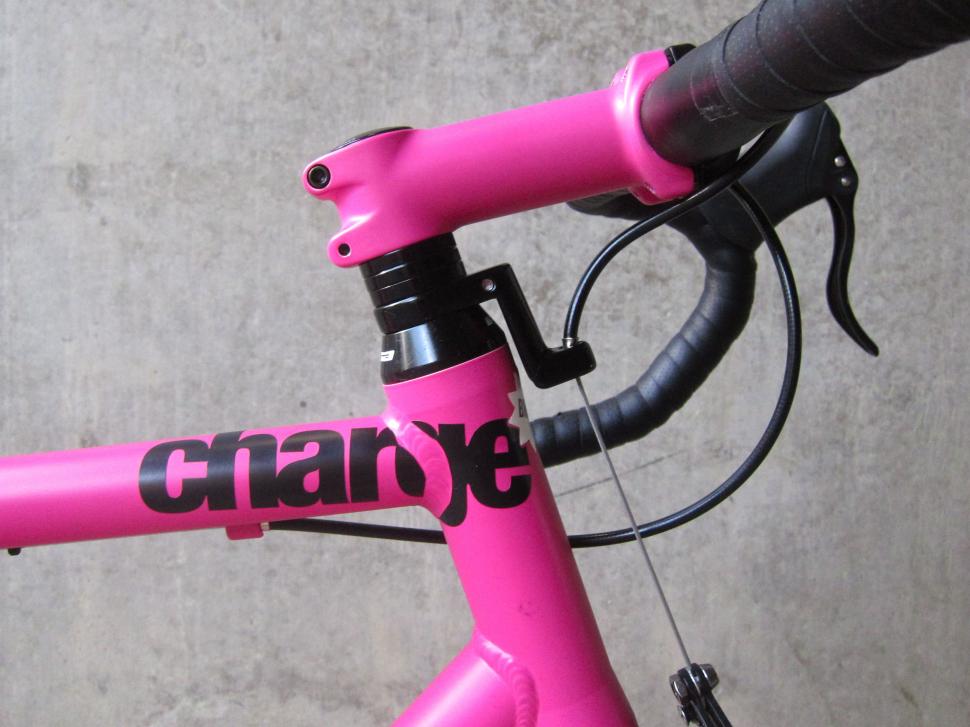


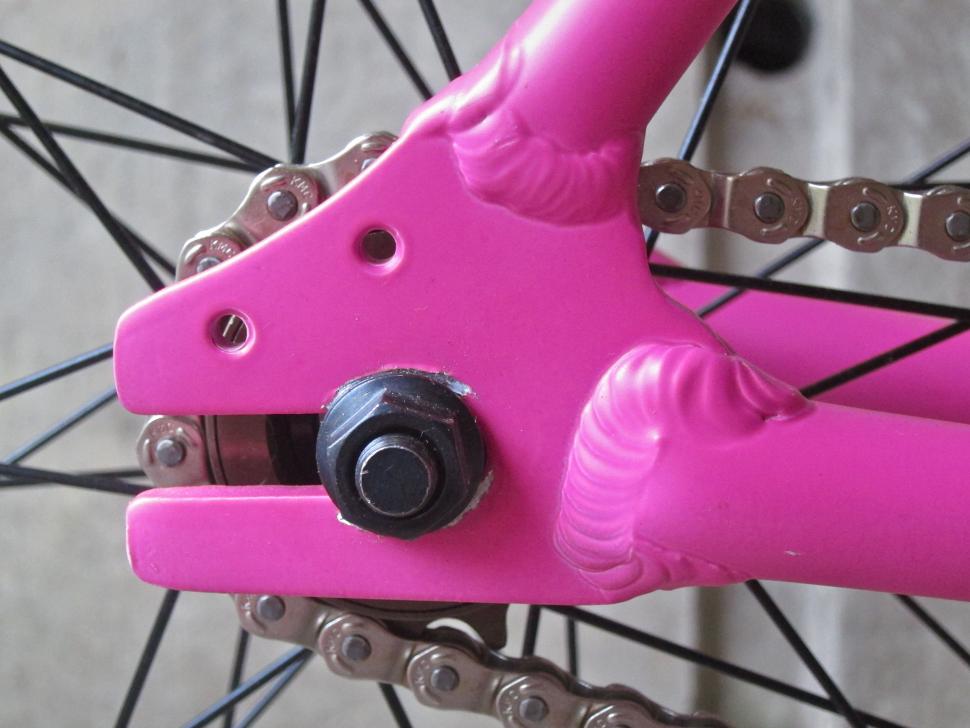
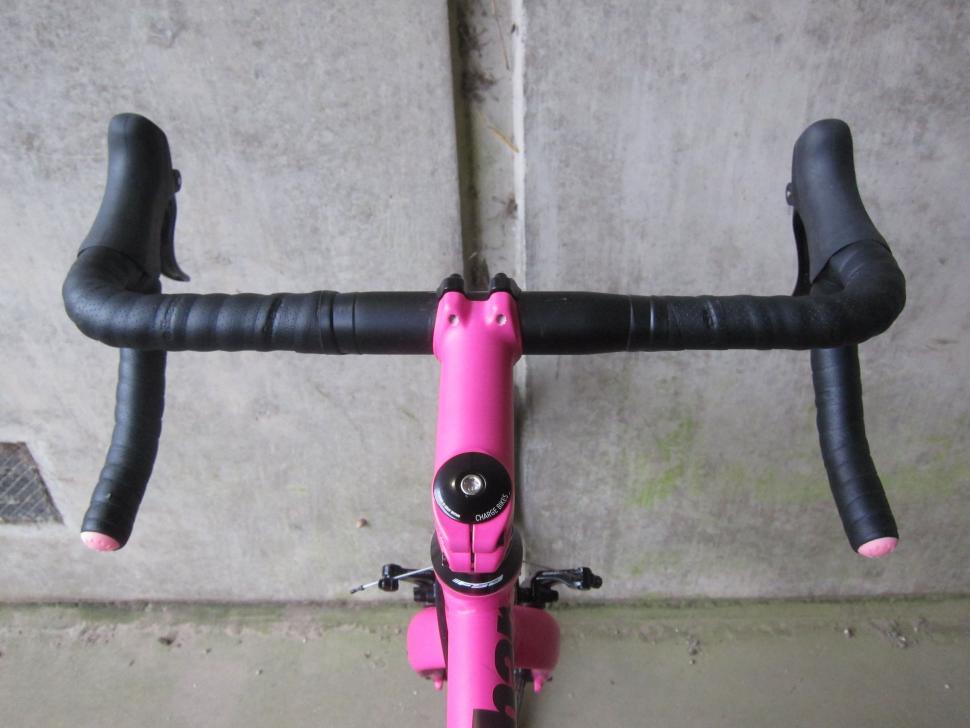
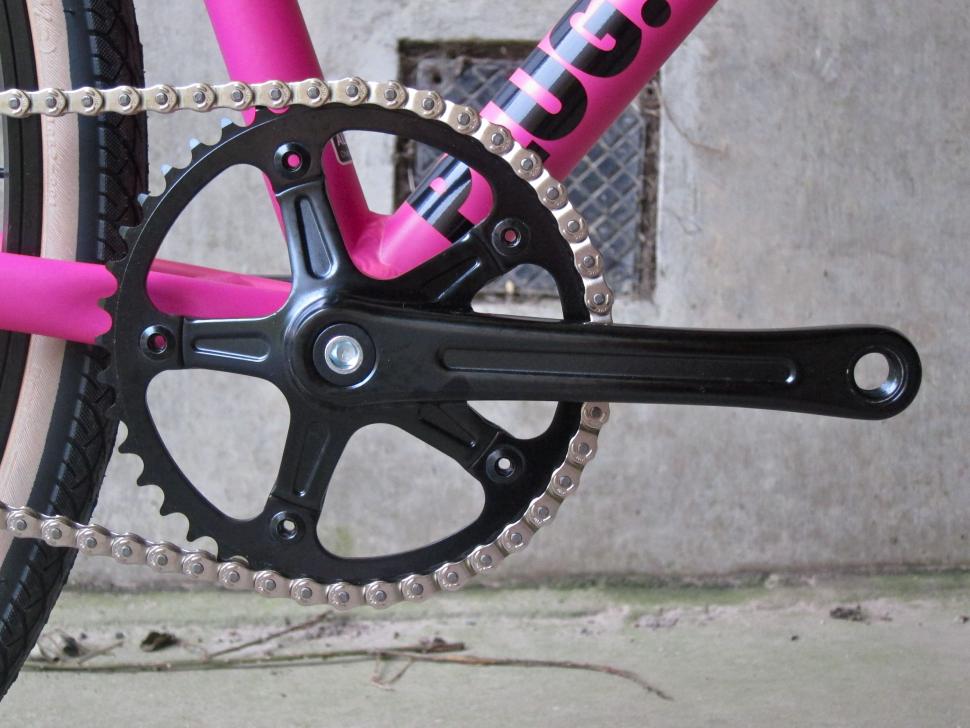
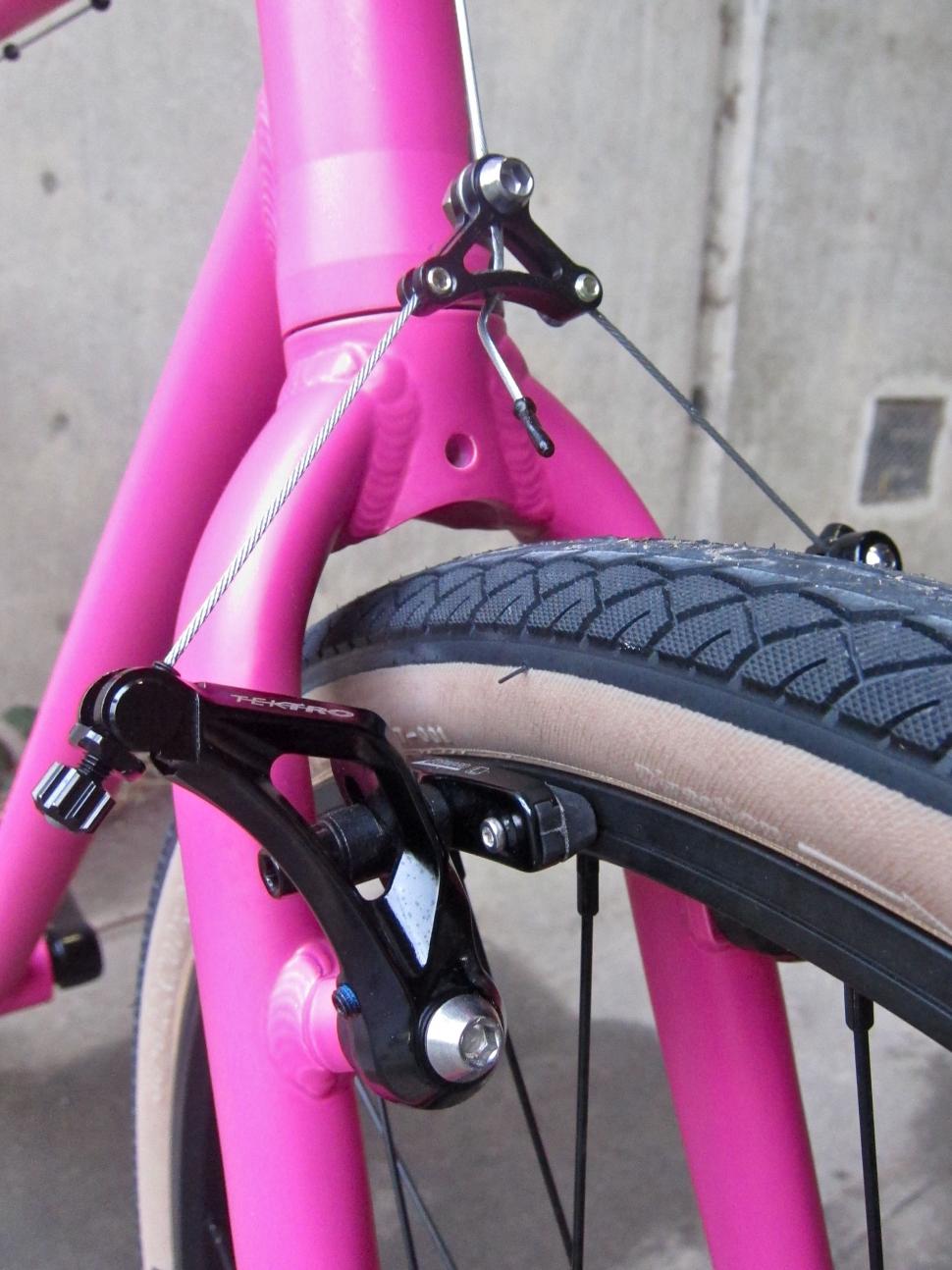
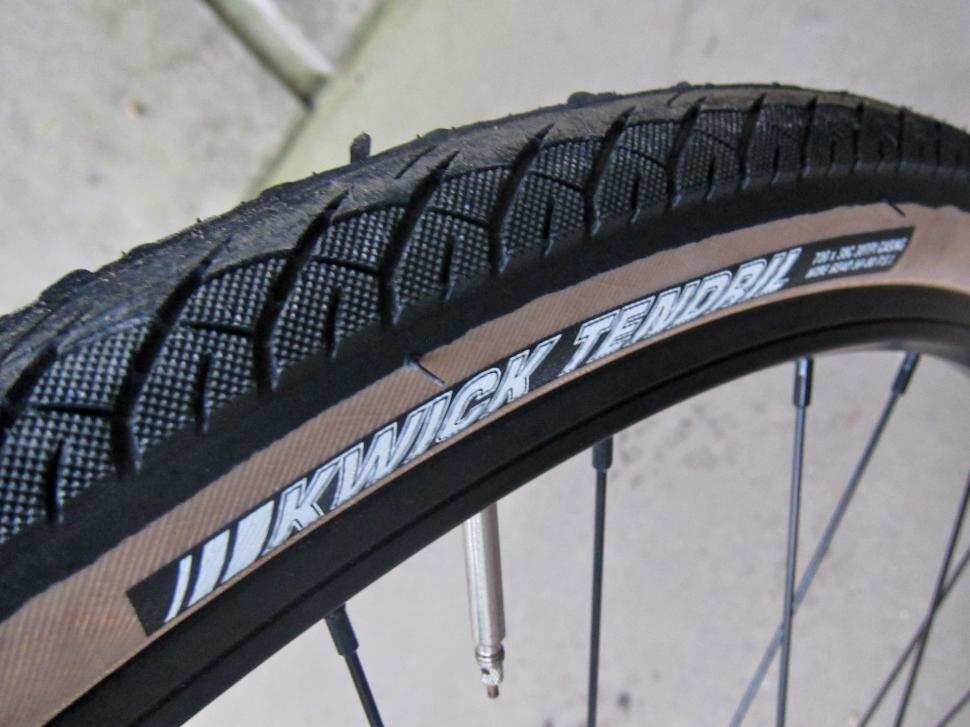
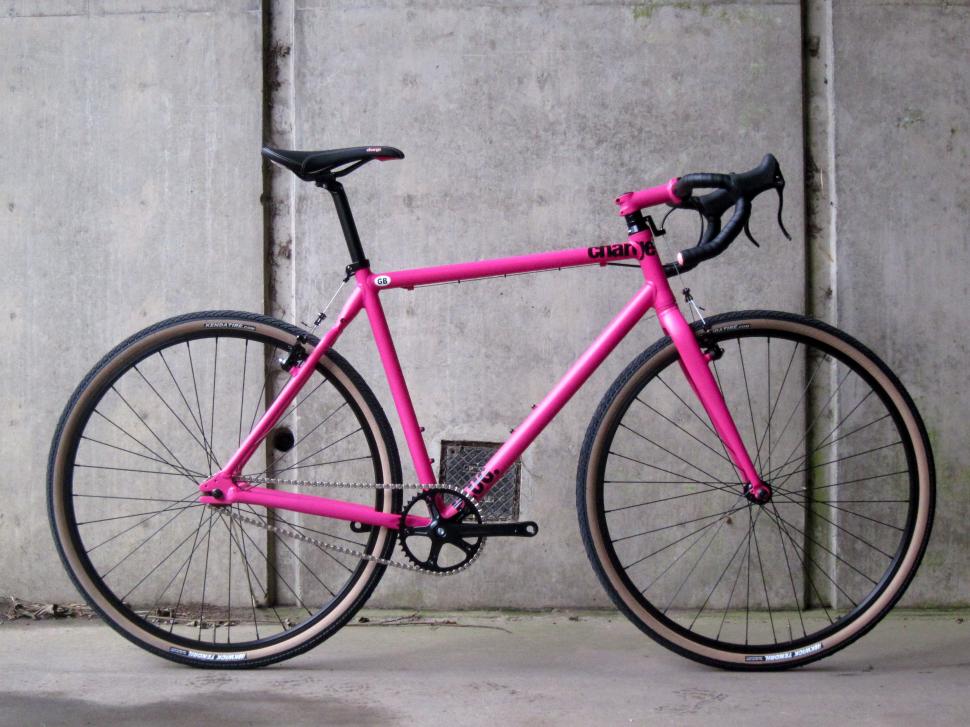


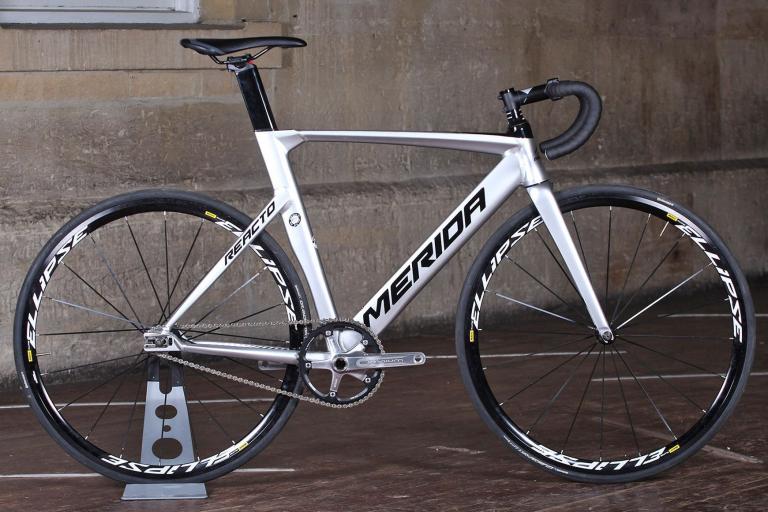
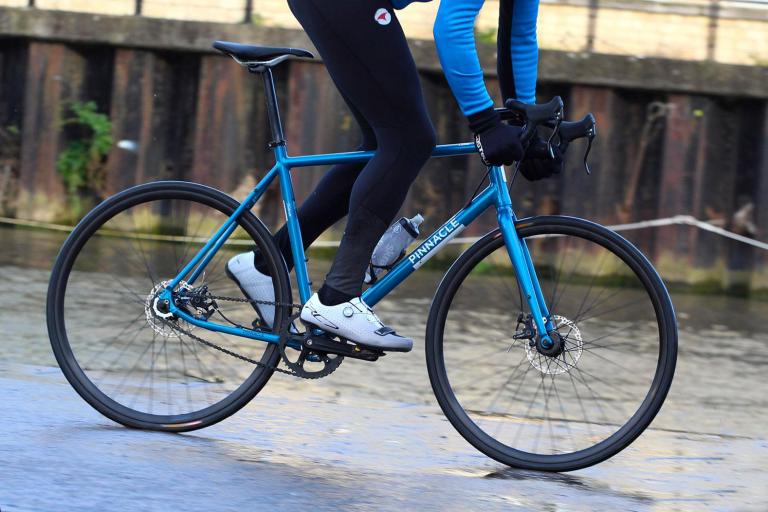
Add new comment
19 comments
Me again, just keeping this updated for posterity.
I was getting a LOT of creaking from the front end of the bike which was driving me spare.
Spent a few evenings swapping/cleaning/greasing stem and handlebar bolts, then turned my attention to the headset, the BB, the cranks, the pedals, and so on, and so on. Was getting very tedious.
Eventually, after some very careful testing on the rides home, I narrowed it down to the headset, fork, or front wheel.
Couldn't be the headset as every single surface was already greased from my first round of de-creaking, so I focussed on the wheel. Everything seemed good but in my searching I noticed how easy it was to pop the cartridge bearings in and out of the hub. Since I always though they should be a tighter fit than that I coated the outer race in bearing locking compound (I think basically red locktite) and popped them back in. No creaks since then, result!
Just received one of these as a surprise birthday present (helped no doubt by a special offer price at Wiggle).
Looks great in the flesh, seemed a shame to stick mudguards on it.
Brakes were initially juddery and squeely, although toe-ing them in removed the squeel and the worst of the judder. I'm still going to fit a fork mounted hanger to hopefully remove the judder completely.
Tyres are surprisingly light, I had bought some Vittoria Voyagers to fit, assuming the stock Kendas would be 700g monsters, but once I'd taken one off (and weighed it, yes I'm that geeky) it was only 550g, 100g heavier than the Vittorias but I can live with that. Plus I like the tan sidewalls.
The gear seems OK but my first ride home was straight into a headwind, tough going but not impossible. As it is I want to take it easy on my knees (from previous singlespeed experience) so will put a 40 tooth ring on to experiment.
The chain isn't the halflink one shown, it's a very beefy looking KMC or KMC equivalent. Quite happy with that!
The rear wheel slipped a little in the dropouts, probably my fault for fitting and tightening with the wee freebie spanner Wiggle supplied. I've tightened it with something proper but am tempted to get a sliding dropout chain tensioner for extra reassurance.
Finally, I was a little taken aback at the stack at the handlebars. I've had back problems in the past so wanted something at least as upright as my old Synapse. The Charge seems to be proper road bike geometry, so I've flipped the stem up and might even (shock horror) fit some Specialized Hover bars. The bike is bright pink already so I probably shouldn't worry about the aesthetics of a riser-drop bar...
One happy owner so far.
The front brake judder issue seems to be pretty widely acknowledge now, shame I didn't know when I bought it. Eventually the shop where I bought it phoned Charge, who knew immediately what the problem was and authorised V brakes to be fitted.
It's pretty poor for Charge to have known about the issue but done nothing about it, and they're still selling them now. Unsurprising that it has dropped £150 in price already.
@part_robot I am using mini-V-brakes Shimano BR-R353 (90mm arm) with replaced pads that work quite good with Shimano brifters. They are not ideal solution as they don't have the right cable pull ratio and as a result they have to sit very close to the rim and adjusting can be tricky but for the same reason they are very powerful and require little hand power.
But if you don't want gears and therefore you are not limited by brifters you can simply buy any normal V-brake you want and drop levers like these http://www.ebay.com/itm/Cane-Creek-Drop-V-Brake-Lever-Set-For-Linear-Pul... that have ~40mm distance from point of rotation to point of cable pull
Excellent - thanks for that.
I had tektro 926al mini vs and tektro rl520s on my pompino, which were pretty good. You could get the trp cx8.4 v brakes which are much pricier but I do t know how much better they are.
My girlfriend is getting a similar one (women's model). Can anyone recommend some v brakes and levers to upgrade to? The stock ones don't seem great.
I might be missing the point. In fact I definitely am. It looks like about 90 quids worth to me. At best.
"That 42t chainring is linked to a 16t freehweel via a chunky half-link chain. You might also want to argue about that gear. ...."
I would be more likely to argue about the chain. Throw it away (in the recycling of course) and replace it with a proper one.
There's no problem getting the chain off - as vonhelmet wrote. It is a slight faff getting the chain tension and alignment correct, but I've got the hang of it now. Another ss rider told me the half-link chain should be better for chain stretch - I was certainly adjusting the chain quite a bit at the beginning but it's settled down now. No sign of the chain coming off! Oh, I scratched the paint on the chainstay too, the very first time I took the rear wheel off
Too pink? Nah, it's just bright, it's a different shade to barbie pink. What you can't see in the pics is that not only is it pink, it has a soft, matte finish to the paint work as well, quite unusual. I was really worried this would scratch like hell, but other than my cack handed chainstay chip, the paintwork is holding up very well (despite me dumping the bike on a wet corner, and countless hits with vegetation on the local bike lane).
Nah, it's just bright, it's a different shade to barbie pink. What you can't see in the pics is that not only is it pink, it has a soft, matte finish to the paint work as well, quite unusual. I was really worried this would scratch like hell, but other than my cack handed chainstay chip, the paintwork is holding up very well (despite me dumping the bike on a wet corner, and countless hits with vegetation on the local bike lane).
Possibly somewhat harsh but definitely very well-crafted review. As the bike seems to be. And as the byline would imply.
Haven't seen that many in this category at the lights bar perhaps the Pompino, the Paddy Wagon, the Day One, the Warhawk and the Nashbar...well, touche. But that competition would indeed be considerable, as the Plug 1 would actually be the lightest of the lot by a fair bit, the only alloy (yes, I am also a charter member of the too-lazy-to-spell-out-aluminium club) option at that.
Oh.. and one other thing... I the use of "alloy" to refer only to aluminium alloy is a bit confusing, especially as in this case where the description specifies that the frame is 6061 aluminium and the fork is an "alloy".
I really wish cycling websites would stop using the ambiguous word "alloy" and splurge on the extra electrons to specify what they mean.
I like the look of this. Slap on some mudguards and that's me sorted for the winter.
I do have a question about the setup pictured above though: the axle appears to be slammed right up against the end of the horizontal dropout. Surely that means that if you wanted to take the rear wheel off you'd have to break the chain?
http://road.cc/sites/default/files/styles/main_width/public/charge-plug-...
No, you just unhook the chain off the big ring. Not difficult.
If it comes off that easily then that would worry the heck out of me.
You'd need to set it up with the axle a bit back in the track end. Then when you need to take the wheel out you move it forward to release the slack and drop the chain and then you take the wheel out. You definitely don't want the chain so loose that you could take it off without moving the wheel - I had a disaster on a bike like this when the chain dropped and then got jammed between the freewheel and the spokes. It broke four spokes, damaged four more and ruined the paint around the chainstay and bottom bracket.
Well it is too ...pink!! And I would prefer V-brakes with the Cane Creek brake levers for V-brakes or something equivalent instead of cantis...
That colour though, it's a bit ....
(I'd try the black)
I've had this bike since last October, and generally it has been great. The gearing has been OK for me, and I live in very hilly Plymouth, and ride regularly on Dartmoor - there's only one hill I have found I can't get up. The bike is a little bit like a landrover, it feels like you can simply ride over stuff - I've not taken it seriously offroad though. I've commuted all winter on it, mainly on roads and bike paths, and it's been great for that, no real loss in speed over my road bike (which has been relegated to a turbo trainer since getting this!).
There are a few niggles though. The freewheel on it is appalling! Must be made of cheese, it felt rough from the start. I put a Halo Clickster on it, and that is so much better (and lovely and noisy!). I also put a brake hanger on the front, as the front brake fork judder was terrifying. This cured it straight away, but the bike was really scary on wet descents prior to this - I know this is the case with cantis on CX bikes, but jeez, that's not good. Other than that, the bike has needed little maintenance other than the chain length adjustment due to stretch, the brakes are OK although I have been tempted to change them for mini-vs.
The colour is fantastic, it definetly gets noticed and loads of comments! I have, in my mind, tastefully matched the bike with my kit, a pink Foska top and a pink Kask helmet (oh, and obviously pink socks). This does get some looks, but if you are going to ride a bright pink, I mean rhodamine, singlespeed in a very hilly city, you might as well go all in ;).
The bike has improved my length strength and spin speed, so I think it's great for fitness and training. Yes, it's harder than a geared bike, but you just have to hit the hills harder and keep going. I love the bike, and I have yet to see another one, so the unique factor is a definite plus as well.
So in summary, a great all-round bike that is fun, still fairly fast on the road, lairy and reliable, with just a couple of niggles that you'll need to sort out.